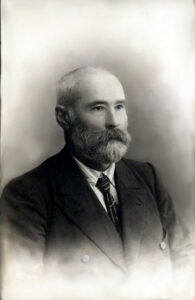The son of an impoverished nobleman was born in 1842 in Złotoria, near Tykocin in Podlasie. He took part in the January Uprising when he was just over twenty years old, as a result of which he was sent to Sybir with a sentence of 8 years. He was a student at the Agrotechnical Institute in Horki at that time. Together with his friends, he joined Ludwik Zwierzdowski’s party, which occupied the town and tried to spread the uprising to the entire Mogilev region. However, support for the insurrection there turned out to be negligible and it quickly collapsed.
Siberia, where he was exiled, turned out to be an opportunity for Jankowski instead of a punishment because this ambitious and curious young man met other aspirational exiles full of a passion for research: Benedykt Dybowski and Wiktor Godlewski – both a decade older than Jankowski. Together they participated in a great expedition along the Argun, Amur and Ussuri rivers, during which they conducted research on the local fauna. After reaching Vladivostok, Jankowski accepted a job offer as manager of a gold mine on Askold Island. He married a local Buryat woman, and they had their first two children there.
Soon, he was wealthy enough to buy a large piece of land on the Sidemi Peninsula in the Sea of Japan (now called the Jankowski Peninsula). He started breeding sika deer, cultivating ginseng on an industrial scale, and developing a new breed of horses adapted to the local climate. He also established a weather station, an orchard, an apiary on the peninsula, and invented a device for cutting off deer’s antlers (so they did not have to be killed and the valuable antlers would regrow). He prepared and sent specimens of fauna and flora to Russian research centres. He also conducted archaeological research and was a co-founder of the museum in Vladivostok. It was only in 1890 that the tsarist authorities put an end to the police supervision that had been exerted over him for all those years. However, he still could not return to the territory of the former Polish-Lithuanian Commonwealth. A leather goods factory and a bookstore should also be listed among his other ventures. He died in 1912 in Sochi, where he had gone for treatment for severe pneumonia.
In Russia, a monument was built in his honour. There have been several books and hundreds of articles about him, not to mention a few films. One of the peninsulas in the Sea of Japan was named after Michał Jankowski, whose surname is also included in the Latin names of birds, butterflies, plants and insects. In the Far East, he was a living legend as an unrivalled hunter. The Koreans living on Askold Island believed that he had eyes in the back of his head because he could shoot prey behind him without even turning around. That’s why they gave Michał Jankowski the nickname “Nenuni”, meaning four-eyed.




